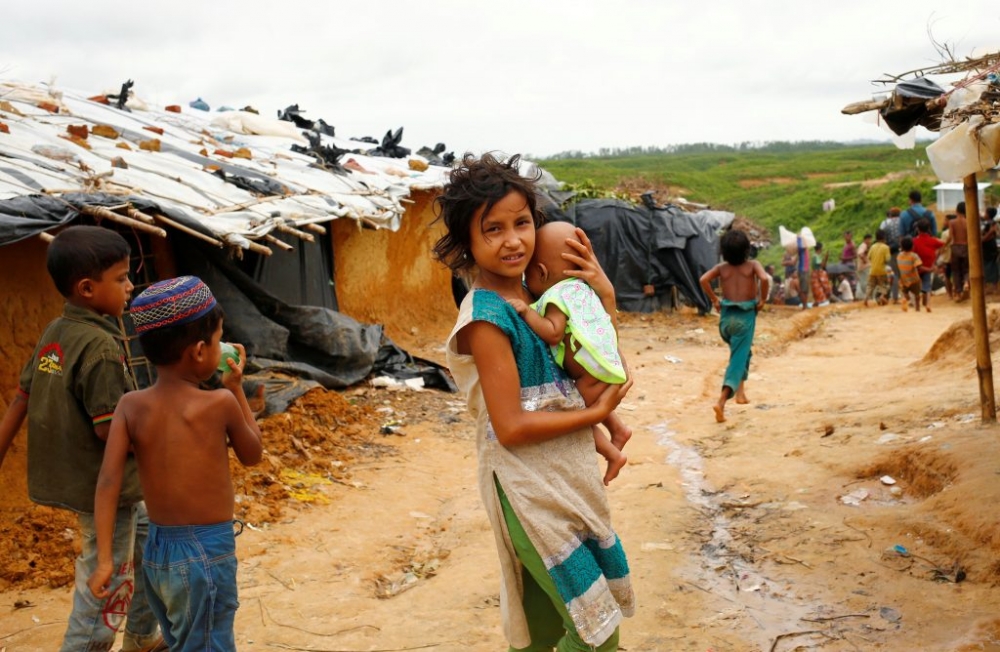Monsoon season poses a serious risk for Bangladesh’s refugee communities

Severe weather brought on by the monsoon season in Bangladesh poses a significant risk to the refugee settlement in Cox’s Bazar.
Since August 2017 the Inter-Sector Coordination Group (ISCG) estimates that 688,001 Rohingya refugees have entered Bangladesh.
A large number of these refugees are living in an overcrowded and hilly settlement that are extremely vulnerable to flooding and landslides.
The UNHCR, the International Organization for Migration, REACH, and the Asian Disaster Preparedness Center conducted a mapping survey of the area and found that 371 households in the largest camp, Kutapalong-Bulakhali, are living on slopes of 45 degrees or more, which are 85% more likely to disappear in a landslide.
Furthermore, the mapping revealed that at least 100,000 people in Kutapalong-Bulakhali are in serious danger from the effects of the monsoon.
Daphnee Cook, Save the Children’s communications and media manager for the Rohingya response said:
“We are facing a major humanitarian emergency within a major humanitarian emergency…we know that the weather will wreak havoc, the question is one of degrees of damage.”
“We know that within 24 hours of a deluge, roads in the camps can turn to mud, while hills stripped of vegetation — now covered with huts made of bamboo and plastic — are highly susceptible to landslides”
Bangladesh experiences two cyclone seasons each year and the government is experienced in cyclone preparation and response, Bangladesh is working with the Inter Sector Coordination Group to extend its preparation programme to cover the refugee settlements.
However, the cyclone response plan usually rely on established community shelters and evacuation points which will be extremely difficult to provide for 1 million Rohingya refugees due to the highly congested camp.
Caroline Gluck, UNHCR senior public information officer deployed to Cox’s Bazar, added:
“It is a race against time to try to mitigate some of the likely impacts”.
UNHCR has already distributed 30,000 upgraded shelter kits including bamboo, extra tarpaulin, string, rope, wire, and nails to be used to enforce and attempt to waterproof individual shelters, while sandbags are being used as anchors.
As evacuation is an unrealistic approach, UNHCR are beginning to pilot a project that will relocate up to 20 families at a time while work is carried out to reduce the steepness of the slopes. After the steepness is reduced the families will be moved back.
In addition to this, there remains a large amount of engineering to be done throughout the camps, such as ensuring drainage systems are repaired and cleaned to allow rain water to flow freely, constructing stairs and railings to ensure people can walk even when the ground is wet and stabilising retaining walls.
Currently a public information campaign is underway to ensure refugees are aware of the risks and how best to respond. This is particularly important as many refugees have fled flat, low-lying plains in Myanmar.
Join us for the 4th Annual Aid & Development Asia Summit in Bangkok, Thailand on 20-21 June 2018.
If you’d like to stay informed on the latest updates in aid and development, please sign up to the AIDF newsletter.
Image credit: Mohammad Ponir














